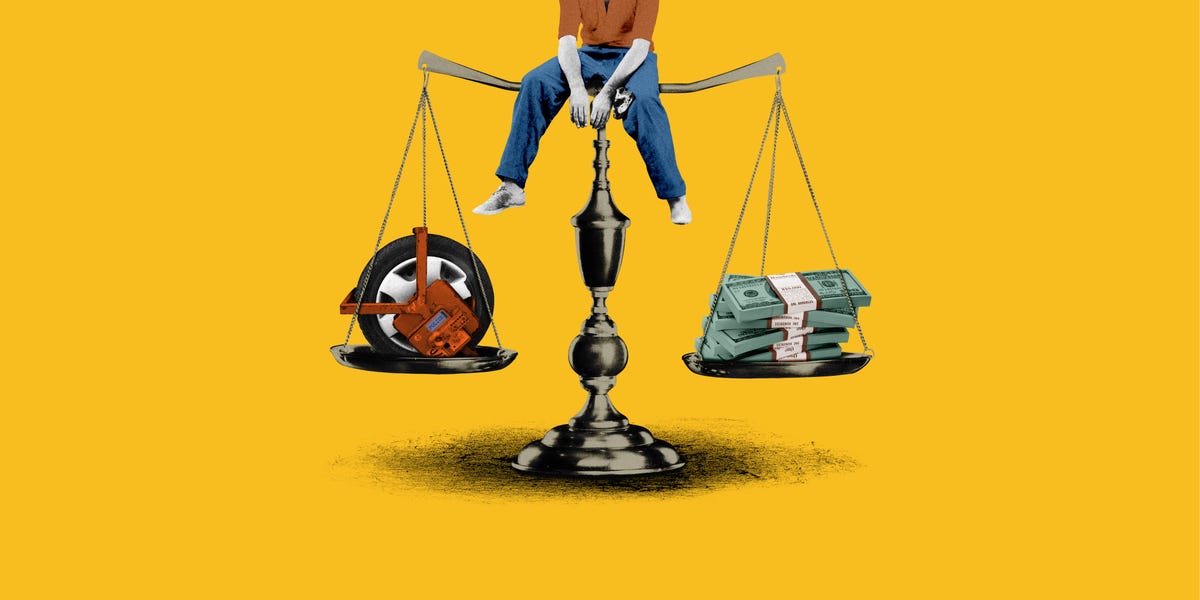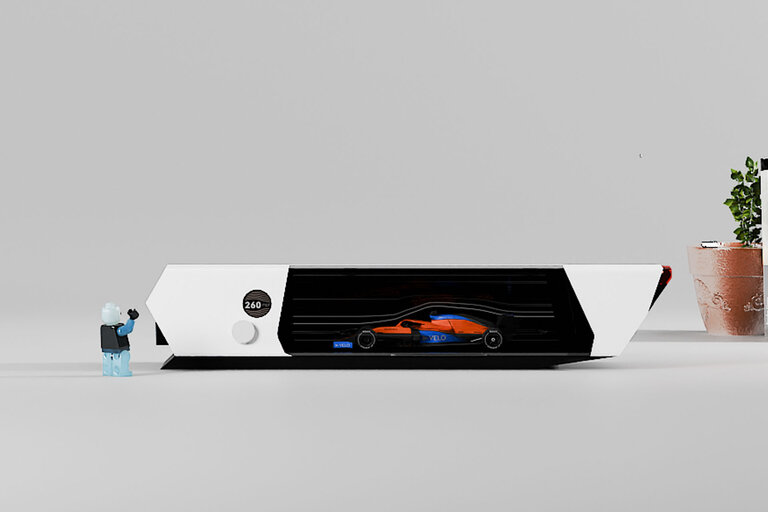
Illustration by Mari FouzCar and Driver
From the February/March 2022 issue of Car and Driver.
Get caught running a stop sign in California (which isn’t a thing you would do, but work with us on this) and you’ll get a $35 ticket. But that’s not what you’ll end up paying. A state penalty assessment adds $10 for every $10 of the base fine and rounds up, so tack on $40 for that. Then there’s a county penalty assessment ($7 for every $10) punching it up another $28. A court-construction penalty assessment is good for $20 more. The Proposition 69 DNA penalty assessment might not seem like much ($4), but coupled with the DNA Identification Fund penalty assessment ($16), there’s yet another $20. In total, 11 fees are added to the original $35 ticket, pushing it to $238.
The math happens again and again, regardless of the infraction, across the more than 3 million tickets issued in California each year. Why? Often because local governments need the money.
Last fall, the New York Times dug into what it referred to as the “hidden scaffolding of financial incentives” that “underpins the policing of motorists in the United States.” The concern—one all motorists should share—is that rather than working in the interest of public safety, ticketing is used as a city tax that disproportionately affects lower-income drivers.
Consider, as the Times did, Henderson, Louisiana. It sits along Interstate 10 and has a population of around 2000. In 2019, it generated $1.7 million—89 percent of its general revenue—through fees and fines. While Henderson is a particularly egregious example, the Times identified more than 730 municipalities in the U.S. that rely on fines and fees for at least 10 percent of their revenue.
“They’re depending on you breaking the law to break even,” said Lisa Foster, a retired California Superior Court judge, at a symposium in 2019. Foster is co-founder of the Fines and Fees Justice Center, a New York–based research and advocacy group.
“This is something that’s built up in governments throughout the country for over three decades as an alternative to finding other revenue for vital government services,” said Martin Hoshino, administrative director of the Judicial Council of California, in early 2021. “What we’ve done is get hooked on fines, fees, and assessments. It all seemed like a good idea at the time, every time we did this over 30 years.”
A May 2021 study by the California Legislative Analyst’s Office that zeroed in on stop-sign violations found that the final price of $238 is up $83 from the cost of the same ticket in 2005.
The Judicial Council, in conjunction with the state’s Superior Courts, has been working on a solution. The My Citations: Ability to Pay Determinations for Infractions online tool allows people to fill out a survey and request a reduction in what they owe based on their ability to pay. The program began in 2019. By the end of 2021, it was available in seven of California’s 58 counties; 12 more will get it this year. Through June 2021, about 16,000 people submitted more than 25,000 requests, resulting in over $9.5 million saved on fines and fees and reducing the average owed on each of their tickets from $692 to $316. It’s a big improvement, but still an expensive mistake.
This content is created and maintained by a third party, and imported onto this page to help users provide their email addresses. You may be able to find more information about this and similar content at piano.io
#California #Program #Helps #Pay #High #Driving #Infractions
Source link





